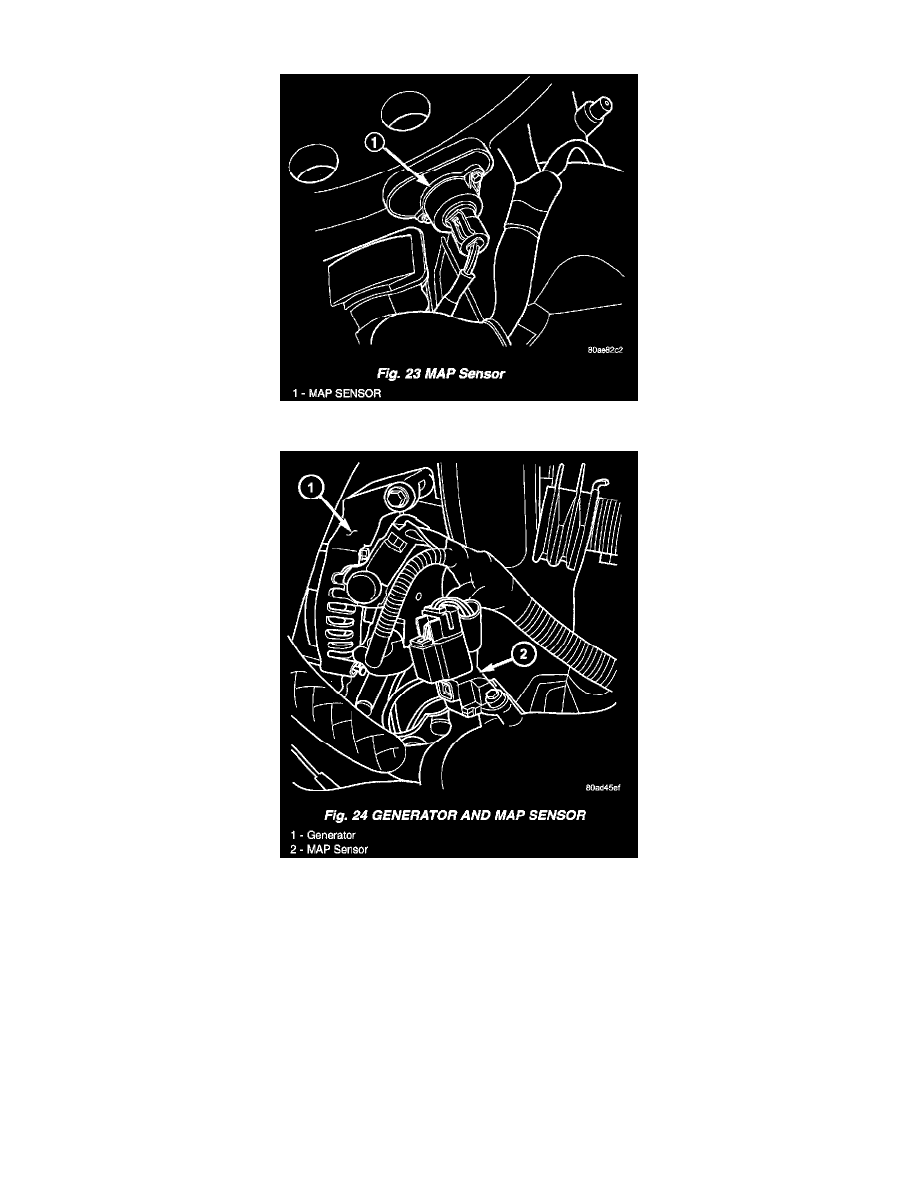Stratus Sedan V6-2.7L (2001)

Manifold Pressure/Vacuum Sensor: Description and Operation
Fig. 23 MAP Sensor
Fig. 24 Generator And MAP Sensor
The MAP sensor mounts to the driver side of the intake manifold plenum or.
The MAP serves as a PCM input, using a silicon based sensing unit, to provide data on the manifold vacuum that draws the air/fuel mixture into the
combustion chamber. The PCM requires this information to determine injector pulse width and spark advance. When MAP equals Barometric pressure,
the pulse width will be at maximum.
Also like the cam and crank sensors, a 5 volt reference is supplied from the PCM and returns a voltage signal to the PCM that reflects manifold pressure.
The zero pressure reading is 0.5V and full scale is 4.5V. For a pressure swing of 0 - 15 psi the voltage changes 4.0V. The sensor is supplied a regulated
4.8 to 5.1 volts to operate the sensor. Like the cam and crank sensors ground is provided through the sensor return circuit.
The MAP sensor input is the number one contributor to pulse width. The most important function of the MAP sensor is to determine barometric pressure.
The PCM needs to know if the vehicle is at sea level or is it in Denver at 5000 feet above sea level, because the air density changes with altitude. It will
also help to correct for varying weather conditions. If a hurricane was coming through the pressure would be very, very low or there could be a real fair
weather, high pressure area. This is important because as air pressure changes the barometric pressure changes. Barometric pressure and altitude have a
